Copyright 2012 by Ripley Entertainment, Inc.
All rights reserved. Ripleys, Believe It or Not!, and Ripleys Believe It or Not! are registered trademarks of Ripley Entertainment Inc. ISBN: 978-1-60991-074-7 epub edition
eISBN-13: 978-1-6099-1074-7 No part of this publication may be reproduced in whole or in part, or stored in a retrieval system, or transmitted in any form or by any means, electronic, mechanical, photocopying, recording, or otherwise, without written permission from the publisher. For information regarding permission, write to VP Intellectual Property Ripley Entertainment Inc. Suite 188, 7576 Kingspointe Parkway Orlando, Florida 32819 email: publishing@ripleys.com
www.ripleys.com PUBLISHERS NOTE While every effort has been made to verify the accuracy of the entries in this book, the Publishers cannot be held responsible for any errors contained in the work. WARNING Some of the stunts and activities in this book are undertaken by experts and should not be attempted by anyone without adequate training and supervision. 
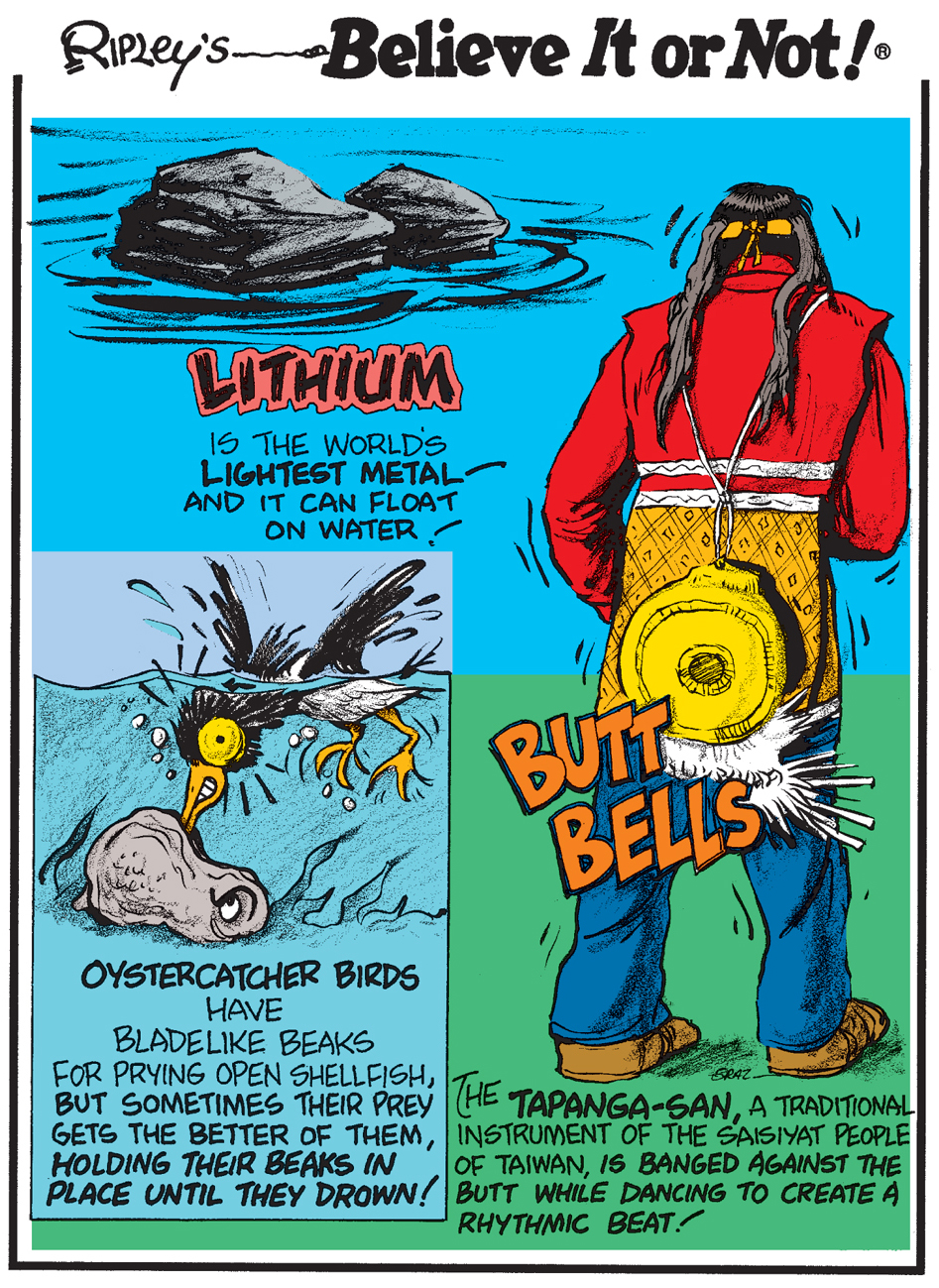 THE STORY BEHIND THE CARTOONS Its no exaggeration to assert that in the early part of the last century Ripleys Believe It or Not! cartoons sparked a whole new family ritual in American households.
THE STORY BEHIND THE CARTOONS Its no exaggeration to assert that in the early part of the last century Ripleys Believe It or Not! cartoons sparked a whole new family ritual in American households. 
 THE STORY BEHIND THE CARTOONS Its no exaggeration to assert that in the early part of the last century Ripleys Believe It or Not! cartoons sparked a whole new family ritual in American households.
THE STORY BEHIND THE CARTOONS Its no exaggeration to assert that in the early part of the last century Ripleys Believe It or Not! cartoons sparked a whole new family ritual in American households.
When The New York Globe was flung onto porches each morning, all generations scrambled to view the daily, quirky cartoons that presented the incredible and the unusual in illustrated form. Like postcards sent from a traveling friend, the black-and-white sketches were as much a breakfast ritual as pancakes and muffins, a form of global, interactive communication, an early-day Facebook or Twitter. Back then, cartoons were popular, quick-read journalism, the pictures adding fast information and atmosphere to newspaper reports, in a time before photographs could be sent to a paper at the press of a button. Illustrators could influence the world. THE TALENTED MR. RIPLEY In the case of the Believe It or Not! cartoons, the power behind the ink pen was Robert Ripley, an imposing, dapper figure in suit and spats, who lived his life at full throttle.
A mighty explorer and a fierce collector of what he termed the curioddities of lifethe worlds amazing feats and folk, artifacts and accountshe illustrated three or four of his findings every day in a single, busy, cartoon column that, at its peak, was voted the second most read newspaper feature in the country, behind only the front page photo, but higher than the front page headline! 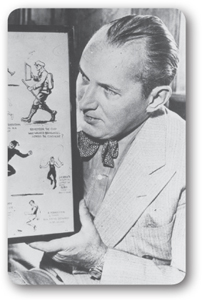 Power in his hands BELIEVE IT OR NOT! IS BORN The rocket to fame for the Believe It or Not! cartoon took off in 1918. Ripley was working as a sports columnist for The Globe and based his first illustrations on unusual athletic achievements, under an initial column heading of Champs and Chumps. Ripleys editor liked the concept, loathed the heading, and Ripley responded by hurriedly scratching out the heading on his original drawings ( below ) and replacing it with the snappier Believe It or Not! The column soon encompassed all quirks in every section of life. It became a success and the phrase believe it or not entered everyday speech.
Power in his hands BELIEVE IT OR NOT! IS BORN The rocket to fame for the Believe It or Not! cartoon took off in 1918. Ripley was working as a sports columnist for The Globe and based his first illustrations on unusual athletic achievements, under an initial column heading of Champs and Chumps. Ripleys editor liked the concept, loathed the heading, and Ripley responded by hurriedly scratching out the heading on his original drawings ( below ) and replacing it with the snappier Believe It or Not! The column soon encompassed all quirks in every section of life. It became a success and the phrase believe it or not entered everyday speech. 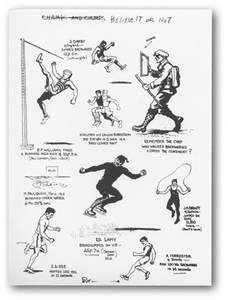 MORE POPULAR THAN SANTA CLAUS Ripley covered over a million miles in his lifetime in a bid to satisfy his unquenchable thirst for material, and his readership responded by mailing him up to 170,000 letters a week (he received more mail than both Santa Claus and President Roosevelt), each letter supplying him with a peculiar tale or a photograph that might fuel his drawings.
MORE POPULAR THAN SANTA CLAUS Ripley covered over a million miles in his lifetime in a bid to satisfy his unquenchable thirst for material, and his readership responded by mailing him up to 170,000 letters a week (he received more mail than both Santa Claus and President Roosevelt), each letter supplying him with a peculiar tale or a photograph that might fuel his drawings. 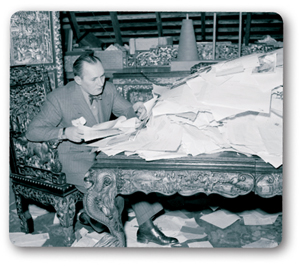 Ripley with mail piled high! That some of the letters ever reached his offices at all was testament to the cartoons popularity and fame.
Ripley with mail piled high! That some of the letters ever reached his offices at all was testament to the cartoons popularity and fame.
One envelope arrived unaddressed, scribbled instead with just the words Believe It or Not! Others had the address written in code. Another had just a rip on the corner to indicate Rip-ley. A hand-drawn boat on ripple-y water got there too. 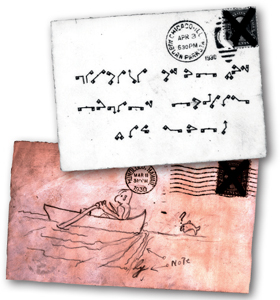 Coded address work
Coded address work 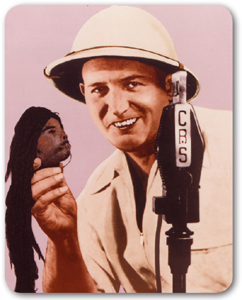 Ripley reports on a shrunken head In 1929, he accepted an offer from Simon & Schuster to collect his work into a book that went on to sell millions. Grabbing the Believe It or Not! baton, Robert Ripley moved quickly into radio in 1930, presenting a weekly radio show for 14 years, at times from some pretty strange locationsa shark tank, behind Niagara Falls, in a rattlesnake pit, at the North Pole, and even in the sky from a parachute. By 1933, Ripleys Believe It or Not! was a famous brand and held a hugely successful exhibition at the Worlds Fair in Chicago.
Ripley reports on a shrunken head In 1929, he accepted an offer from Simon & Schuster to collect his work into a book that went on to sell millions. Grabbing the Believe It or Not! baton, Robert Ripley moved quickly into radio in 1930, presenting a weekly radio show for 14 years, at times from some pretty strange locationsa shark tank, behind Niagara Falls, in a rattlesnake pit, at the North Pole, and even in the sky from a parachute. By 1933, Ripleys Believe It or Not! was a famous brand and held a hugely successful exhibition at the Worlds Fair in Chicago.
Publishing magnate William Randolph Hearst was a firm Ripleys Believer and, under his guidance, the cartoon shot from an initial weekly read to a daily feature to a syndication that covered 300 publications in 17 different languages. Ripley had turned into a celebrity A-lister. The Believe It or Not! cartoon had struck gold. 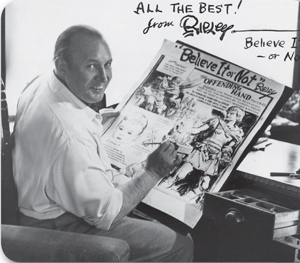 Each caption required rolled-up sleeves, good draughtsmanship and, above all, a great story! FAR-REACHING CONSEQUENCES Believe It or Not! illustrations have rarely contained the satirical, political or comic edge of other cartoons of the time, concentrating more on straight reporting of the world as it was, but they have often had a stab at authority. Reaction to a 1929 edition of Believe It or Not! even resonates in the United States todayan illustration stated that the US did not have a national anthem. Robert Ripley received so many letters on the subject that he urged his readers to flood Congresss mailbox instead.
Each caption required rolled-up sleeves, good draughtsmanship and, above all, a great story! FAR-REACHING CONSEQUENCES Believe It or Not! illustrations have rarely contained the satirical, political or comic edge of other cartoons of the time, concentrating more on straight reporting of the world as it was, but they have often had a stab at authority. Reaction to a 1929 edition of Believe It or Not! even resonates in the United States todayan illustration stated that the US did not have a national anthem. Robert Ripley received so many letters on the subject that he urged his readers to flood Congresss mailbox instead.
More than five million people wrote to their Representatives and, as a result, The Star-Spangled Banner became the official national anthem. 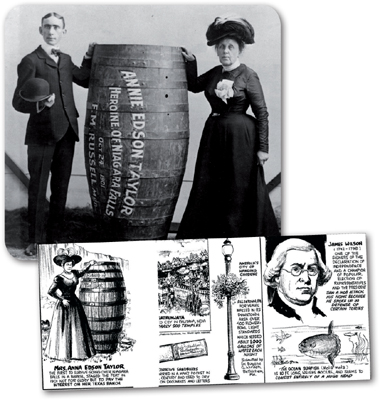 A 1901 photo of Annie Edson Taylor was the inspiration for a cartoon drawn by Walter Frehm. Mrs. Taylor was the first person to survive going over Niagara Falls in a barrel. Nor was the column lacking in shocking statements. Robert Ripley loved to stir things up, juggling misconceptions and playing with words, writing once, Buffalo Bill never shot a buffalo in his life! Anyone who argued that this was preposterous was reminded that the buffalo he shot were in fact bison! Ripley swore that his cartoons told the truthnothing more, nothing less.
A 1901 photo of Annie Edson Taylor was the inspiration for a cartoon drawn by Walter Frehm. Mrs. Taylor was the first person to survive going over Niagara Falls in a barrel. Nor was the column lacking in shocking statements. Robert Ripley loved to stir things up, juggling misconceptions and playing with words, writing once, Buffalo Bill never shot a buffalo in his life! Anyone who argued that this was preposterous was reminded that the buffalo he shot were in fact bison! Ripley swore that his cartoons told the truthnothing more, nothing less.
Next page
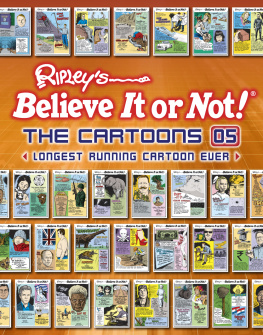


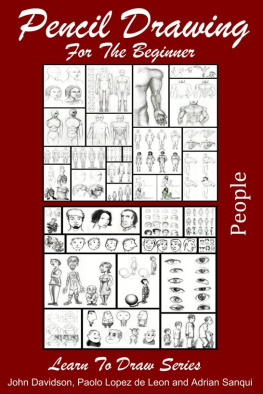


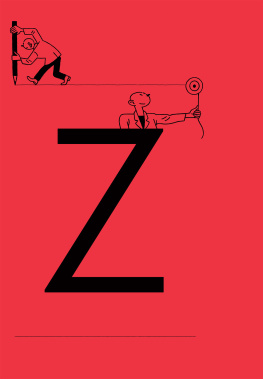
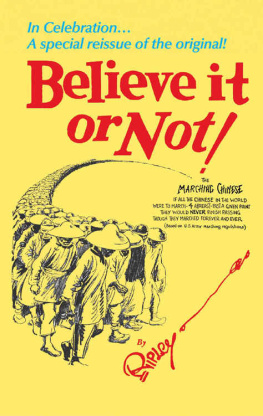
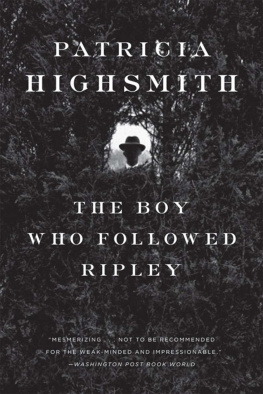

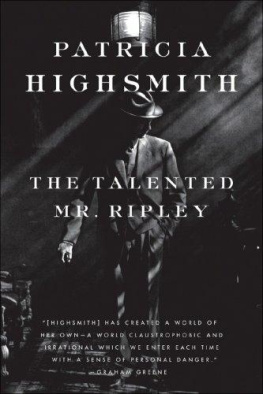

 THE STORY BEHIND THE CARTOONS Its no exaggeration to assert that in the early part of the last century Ripleys Believe It or Not! cartoons sparked a whole new family ritual in American households.
THE STORY BEHIND THE CARTOONS Its no exaggeration to assert that in the early part of the last century Ripleys Believe It or Not! cartoons sparked a whole new family ritual in American households.  Power in his hands BELIEVE IT OR NOT! IS BORN The rocket to fame for the Believe It or Not! cartoon took off in 1918. Ripley was working as a sports columnist for The Globe and based his first illustrations on unusual athletic achievements, under an initial column heading of Champs and Chumps. Ripleys editor liked the concept, loathed the heading, and Ripley responded by hurriedly scratching out the heading on his original drawings ( below ) and replacing it with the snappier Believe It or Not! The column soon encompassed all quirks in every section of life. It became a success and the phrase believe it or not entered everyday speech.
Power in his hands BELIEVE IT OR NOT! IS BORN The rocket to fame for the Believe It or Not! cartoon took off in 1918. Ripley was working as a sports columnist for The Globe and based his first illustrations on unusual athletic achievements, under an initial column heading of Champs and Chumps. Ripleys editor liked the concept, loathed the heading, and Ripley responded by hurriedly scratching out the heading on his original drawings ( below ) and replacing it with the snappier Believe It or Not! The column soon encompassed all quirks in every section of life. It became a success and the phrase believe it or not entered everyday speech.  MORE POPULAR THAN SANTA CLAUS Ripley covered over a million miles in his lifetime in a bid to satisfy his unquenchable thirst for material, and his readership responded by mailing him up to 170,000 letters a week (he received more mail than both Santa Claus and President Roosevelt), each letter supplying him with a peculiar tale or a photograph that might fuel his drawings.
MORE POPULAR THAN SANTA CLAUS Ripley covered over a million miles in his lifetime in a bid to satisfy his unquenchable thirst for material, and his readership responded by mailing him up to 170,000 letters a week (he received more mail than both Santa Claus and President Roosevelt), each letter supplying him with a peculiar tale or a photograph that might fuel his drawings.  Ripley with mail piled high! That some of the letters ever reached his offices at all was testament to the cartoons popularity and fame.
Ripley with mail piled high! That some of the letters ever reached his offices at all was testament to the cartoons popularity and fame. Coded address work
Coded address work  Ripley reports on a shrunken head In 1929, he accepted an offer from Simon & Schuster to collect his work into a book that went on to sell millions. Grabbing the Believe It or Not! baton, Robert Ripley moved quickly into radio in 1930, presenting a weekly radio show for 14 years, at times from some pretty strange locationsa shark tank, behind Niagara Falls, in a rattlesnake pit, at the North Pole, and even in the sky from a parachute. By 1933, Ripleys Believe It or Not! was a famous brand and held a hugely successful exhibition at the Worlds Fair in Chicago.
Ripley reports on a shrunken head In 1929, he accepted an offer from Simon & Schuster to collect his work into a book that went on to sell millions. Grabbing the Believe It or Not! baton, Robert Ripley moved quickly into radio in 1930, presenting a weekly radio show for 14 years, at times from some pretty strange locationsa shark tank, behind Niagara Falls, in a rattlesnake pit, at the North Pole, and even in the sky from a parachute. By 1933, Ripleys Believe It or Not! was a famous brand and held a hugely successful exhibition at the Worlds Fair in Chicago. Each caption required rolled-up sleeves, good draughtsmanship and, above all, a great story! FAR-REACHING CONSEQUENCES Believe It or Not! illustrations have rarely contained the satirical, political or comic edge of other cartoons of the time, concentrating more on straight reporting of the world as it was, but they have often had a stab at authority. Reaction to a 1929 edition of Believe It or Not! even resonates in the United States todayan illustration stated that the US did not have a national anthem. Robert Ripley received so many letters on the subject that he urged his readers to flood Congresss mailbox instead.
Each caption required rolled-up sleeves, good draughtsmanship and, above all, a great story! FAR-REACHING CONSEQUENCES Believe It or Not! illustrations have rarely contained the satirical, political or comic edge of other cartoons of the time, concentrating more on straight reporting of the world as it was, but they have often had a stab at authority. Reaction to a 1929 edition of Believe It or Not! even resonates in the United States todayan illustration stated that the US did not have a national anthem. Robert Ripley received so many letters on the subject that he urged his readers to flood Congresss mailbox instead. A 1901 photo of Annie Edson Taylor was the inspiration for a cartoon drawn by Walter Frehm. Mrs. Taylor was the first person to survive going over Niagara Falls in a barrel. Nor was the column lacking in shocking statements. Robert Ripley loved to stir things up, juggling misconceptions and playing with words, writing once, Buffalo Bill never shot a buffalo in his life! Anyone who argued that this was preposterous was reminded that the buffalo he shot were in fact bison! Ripley swore that his cartoons told the truthnothing more, nothing less.
A 1901 photo of Annie Edson Taylor was the inspiration for a cartoon drawn by Walter Frehm. Mrs. Taylor was the first person to survive going over Niagara Falls in a barrel. Nor was the column lacking in shocking statements. Robert Ripley loved to stir things up, juggling misconceptions and playing with words, writing once, Buffalo Bill never shot a buffalo in his life! Anyone who argued that this was preposterous was reminded that the buffalo he shot were in fact bison! Ripley swore that his cartoons told the truthnothing more, nothing less.